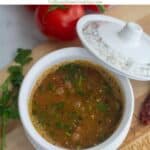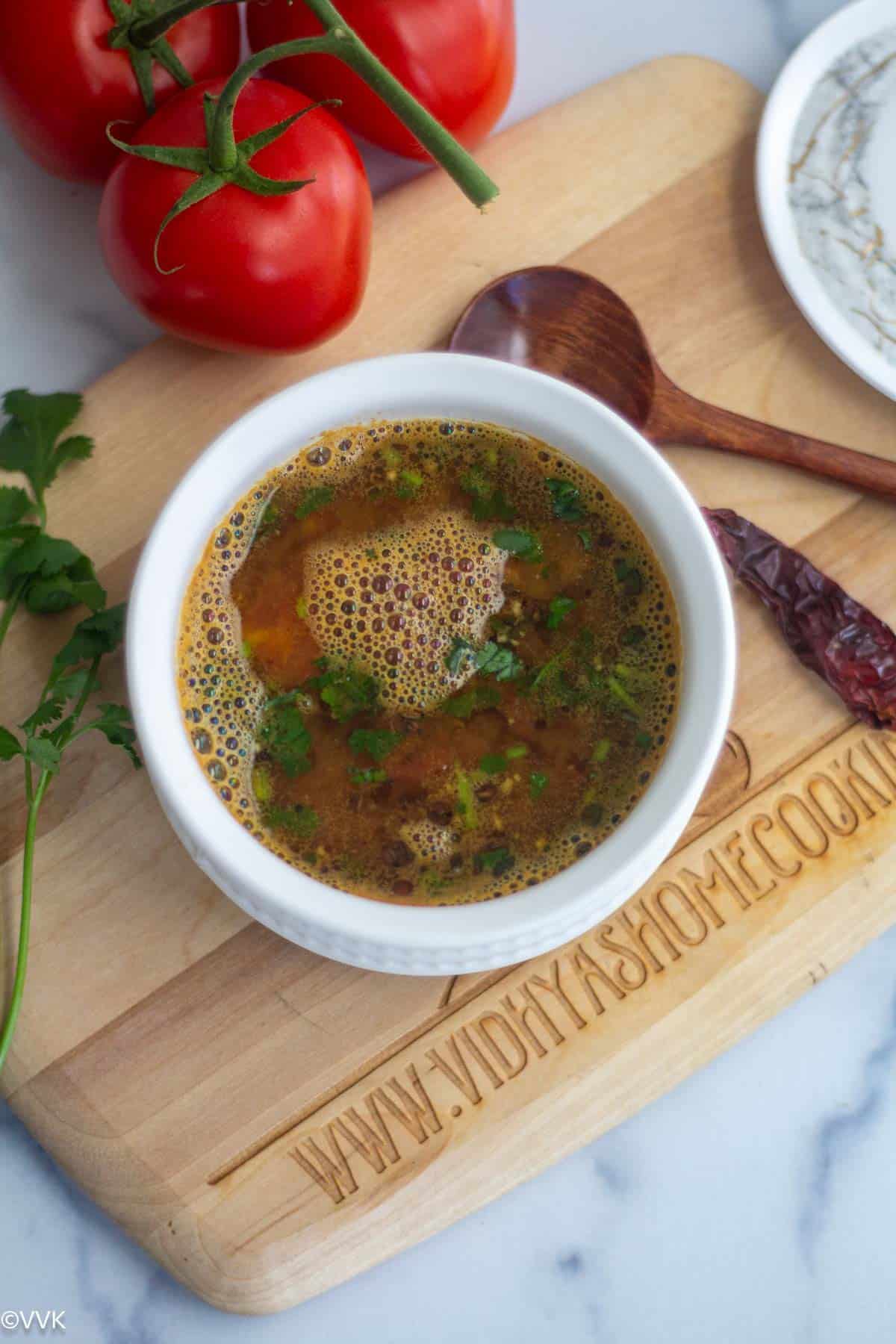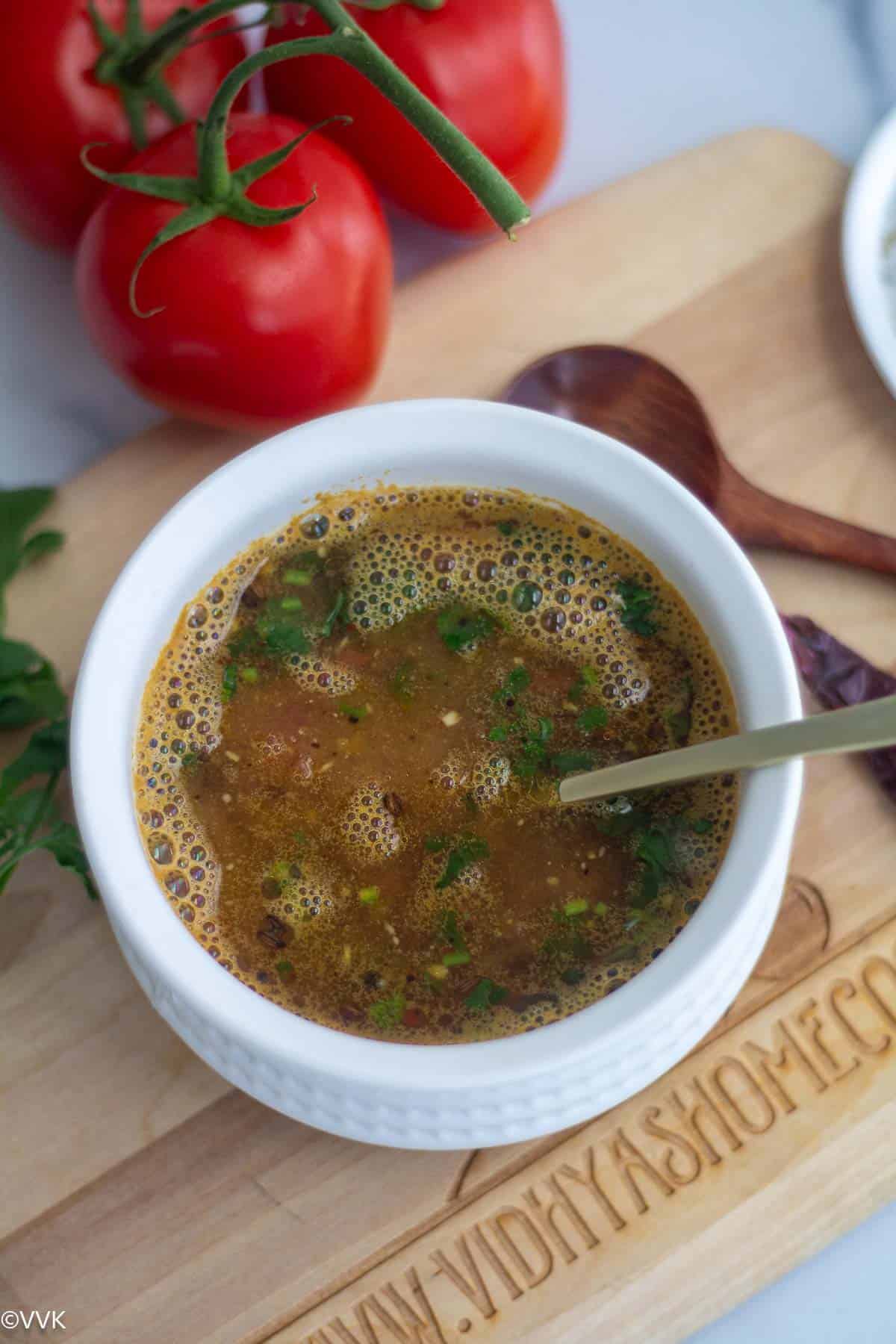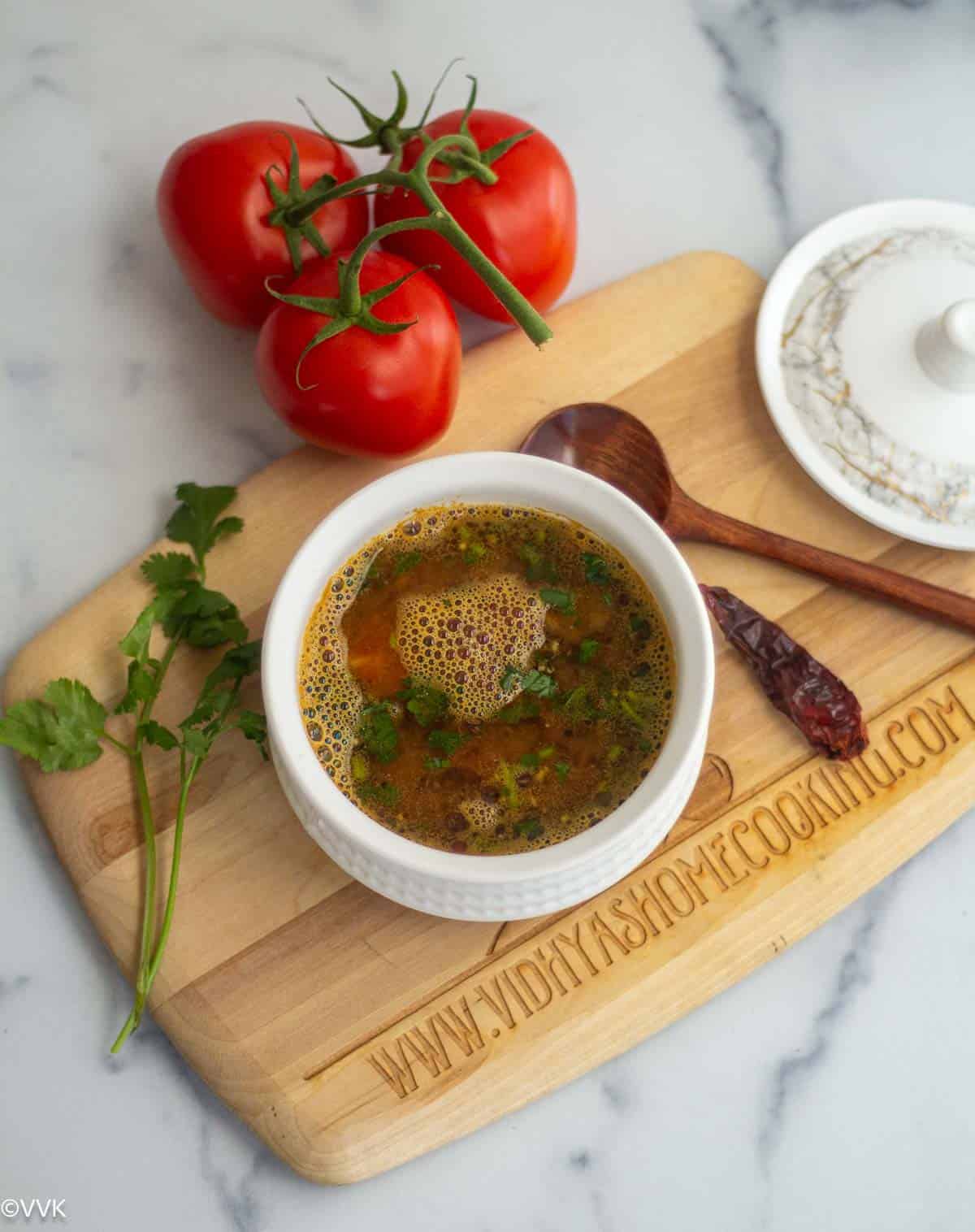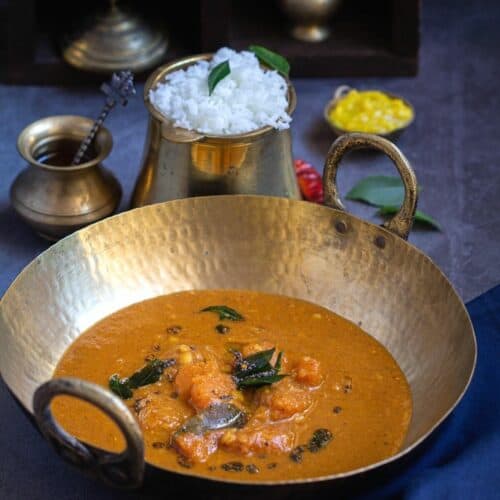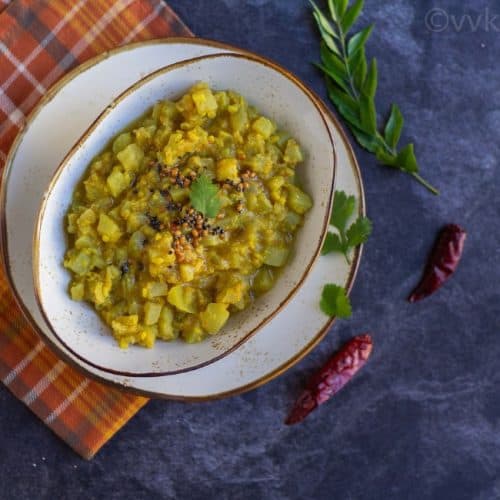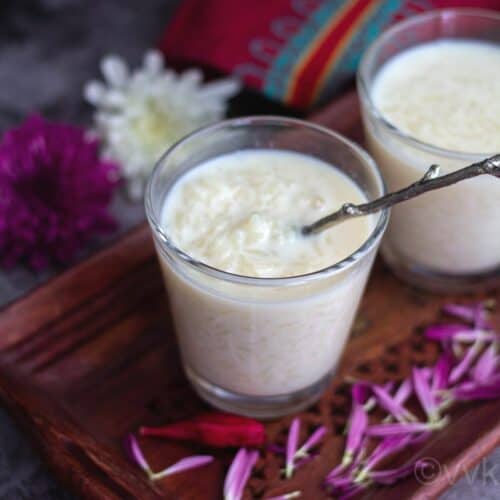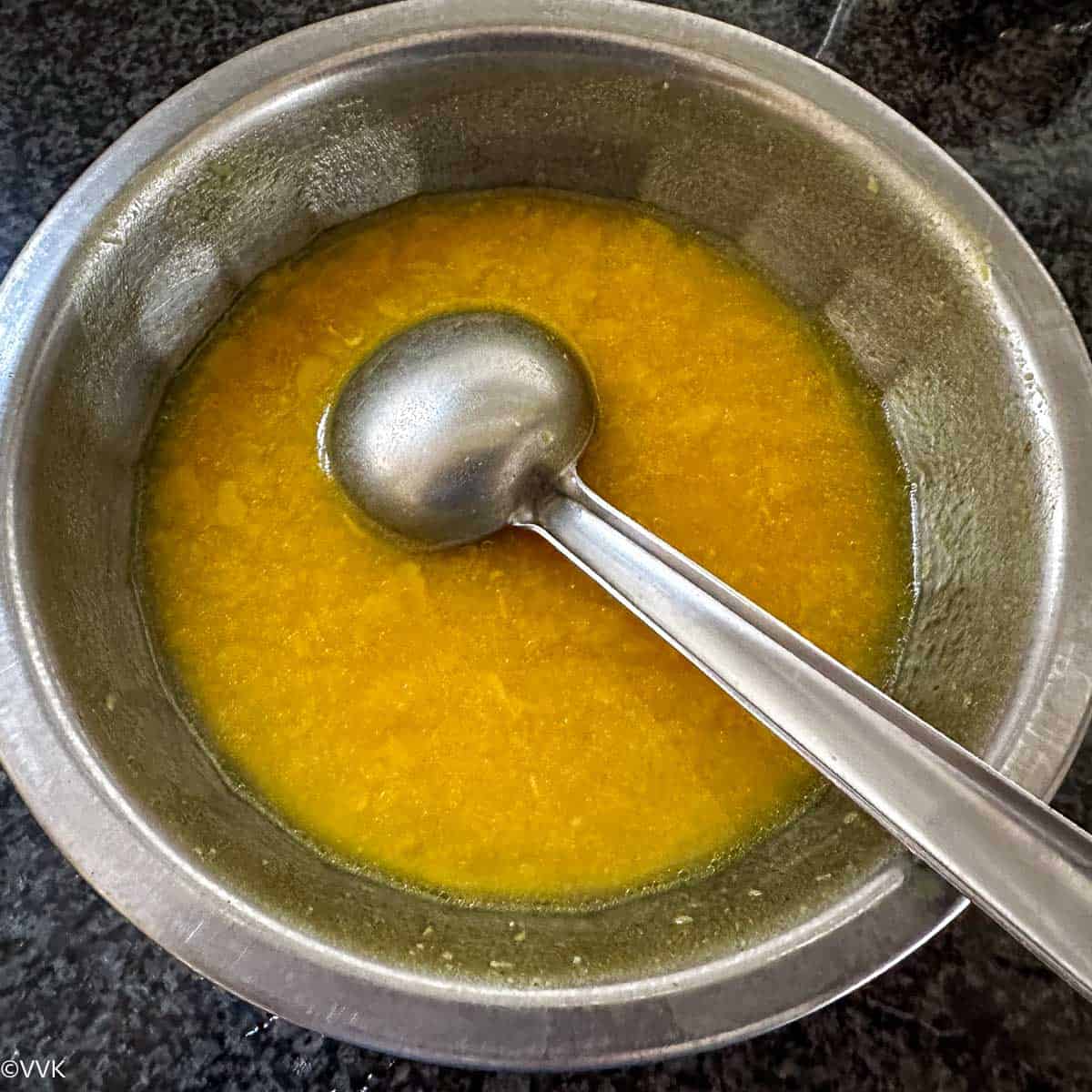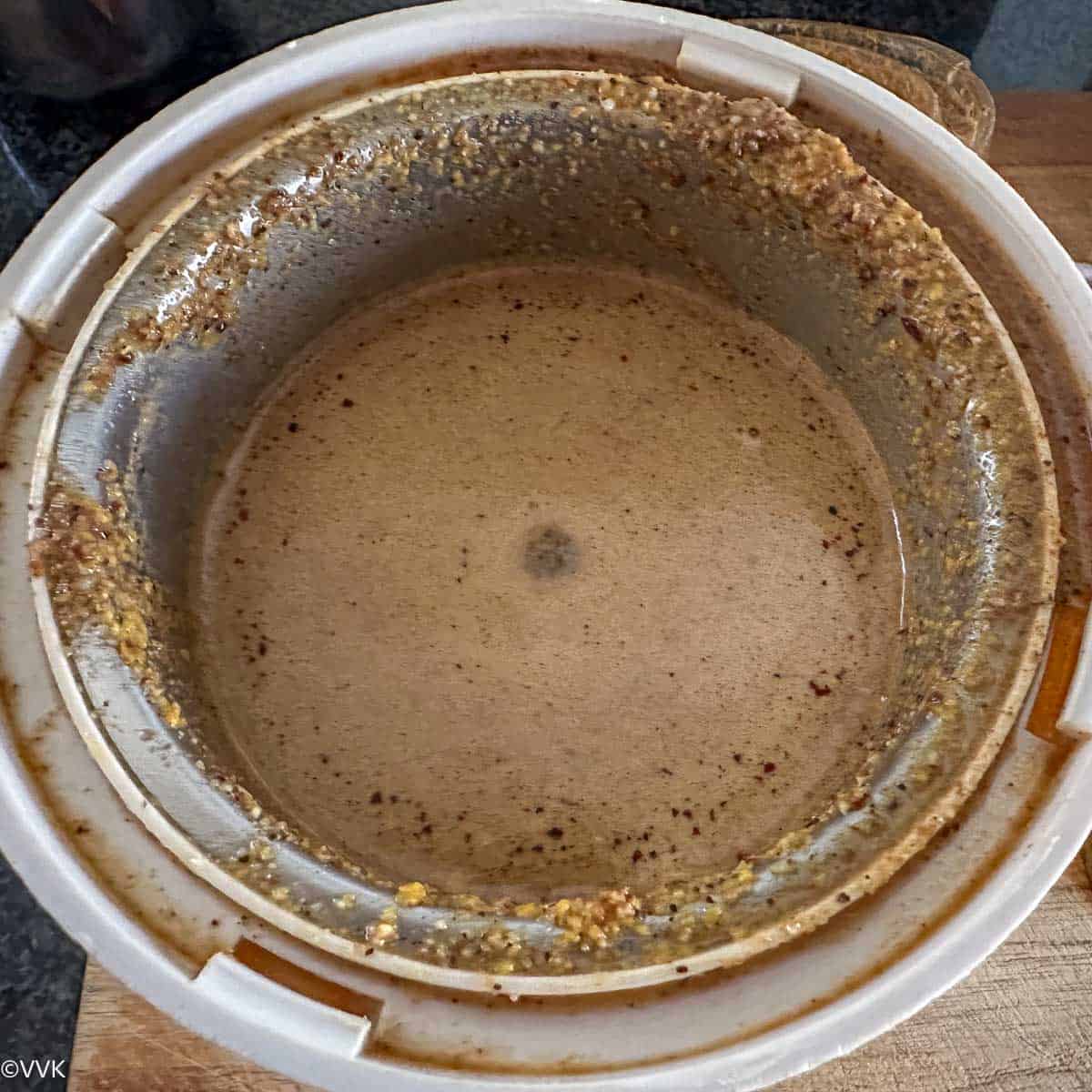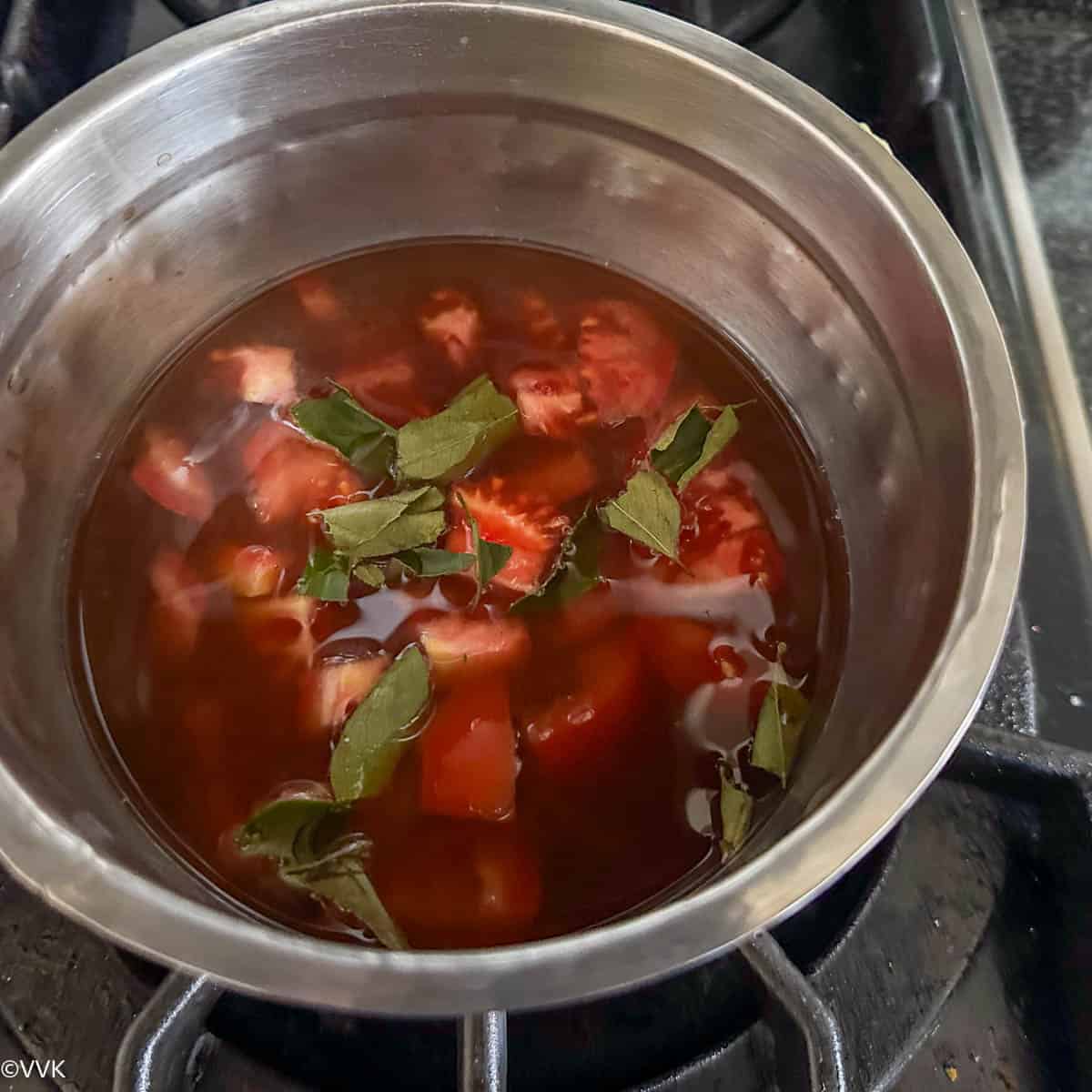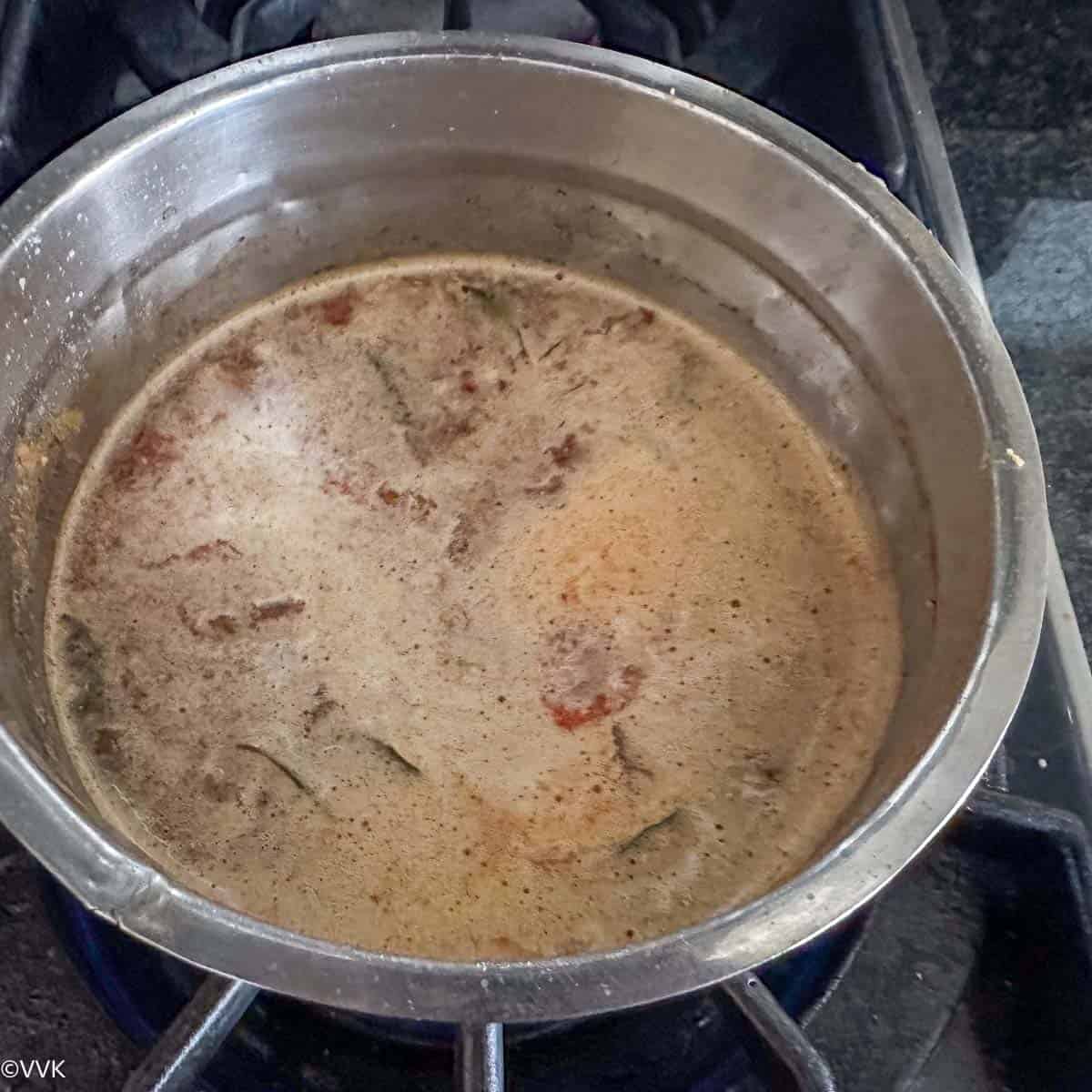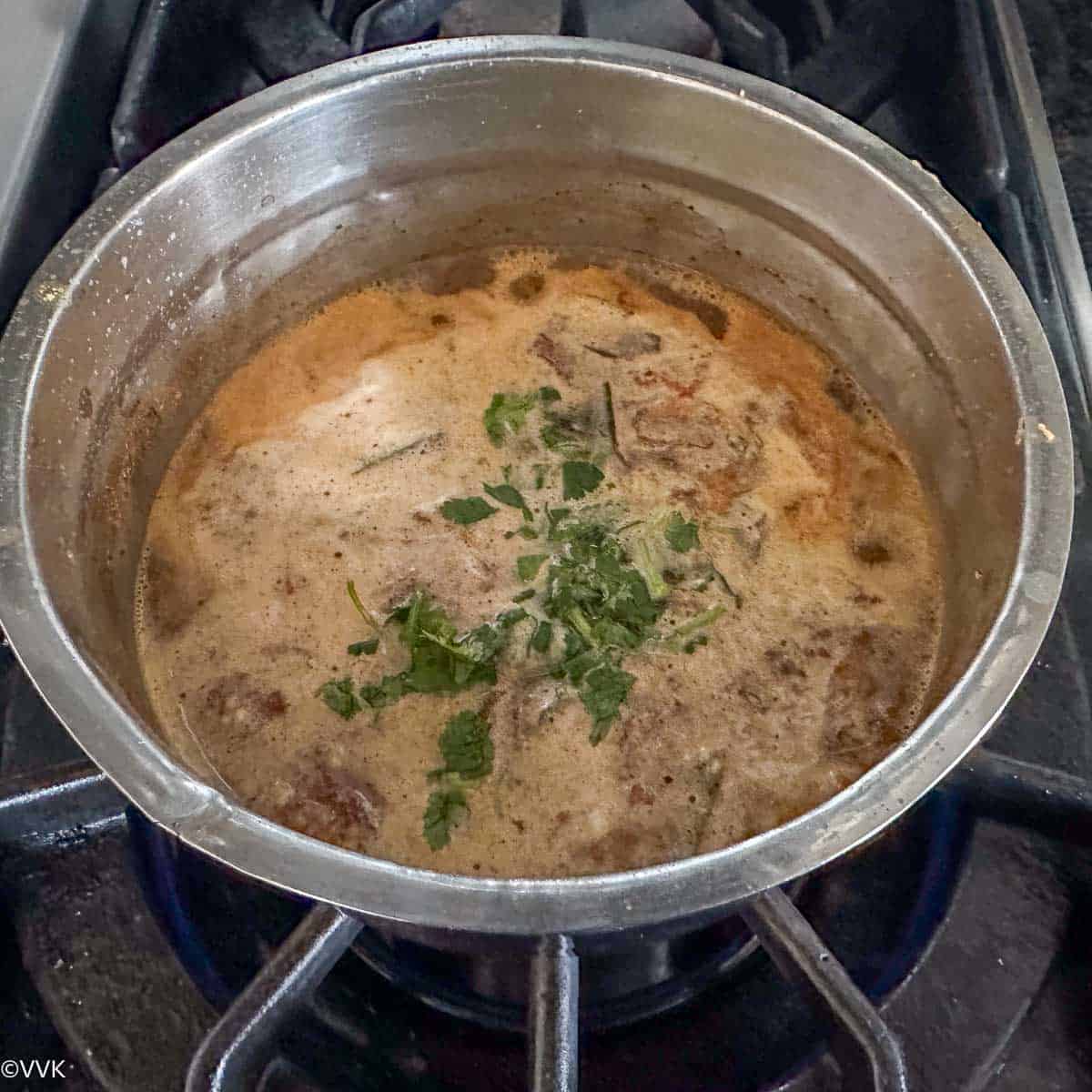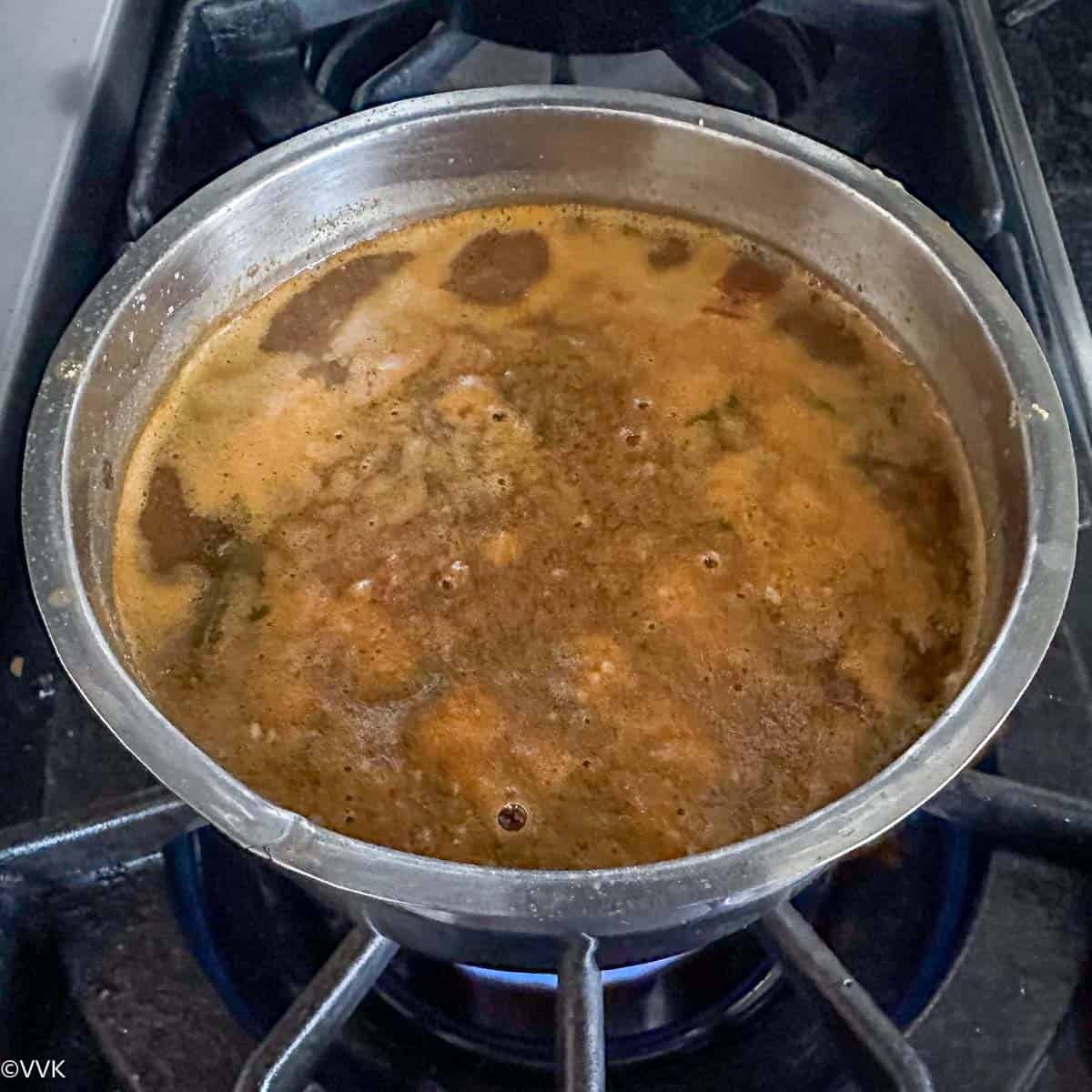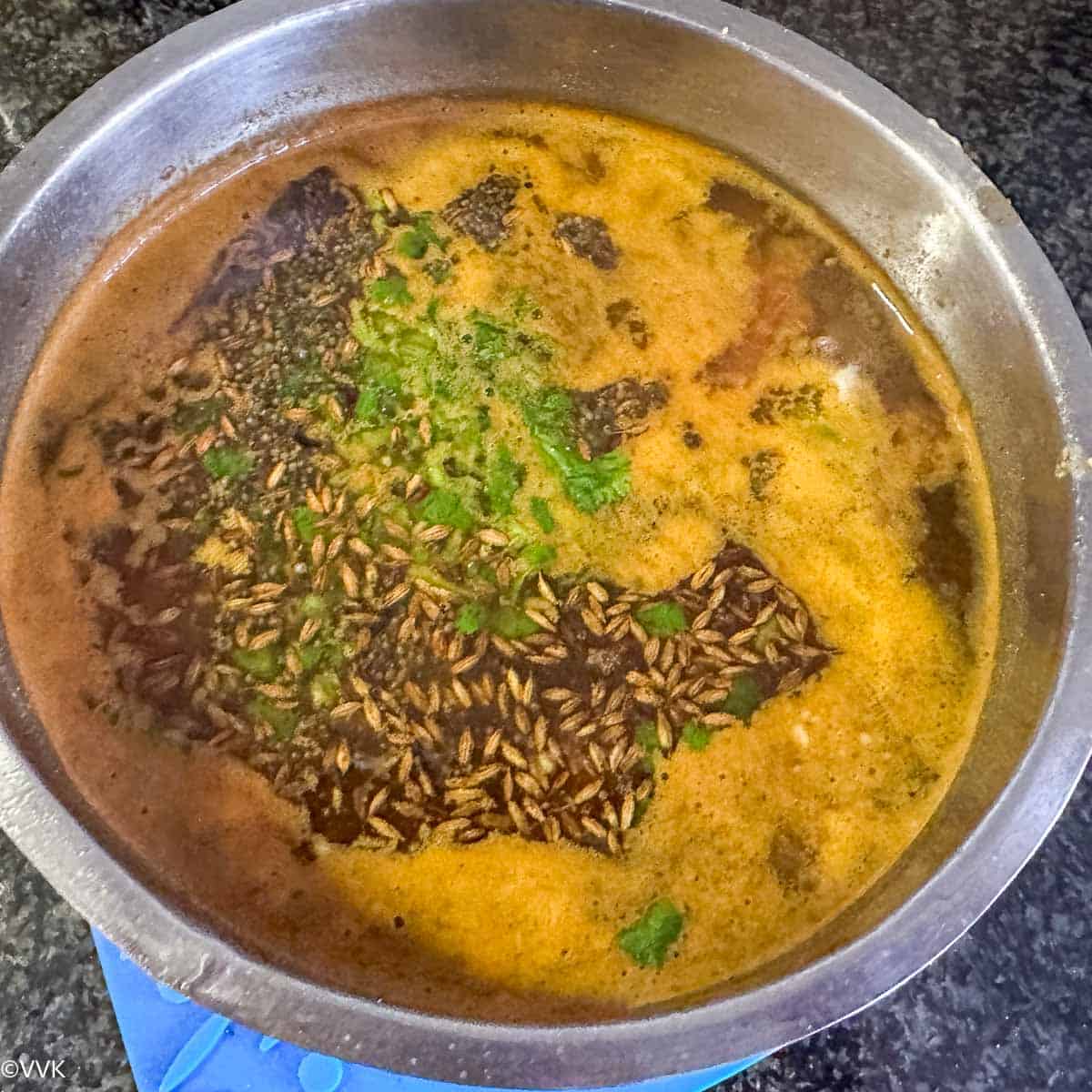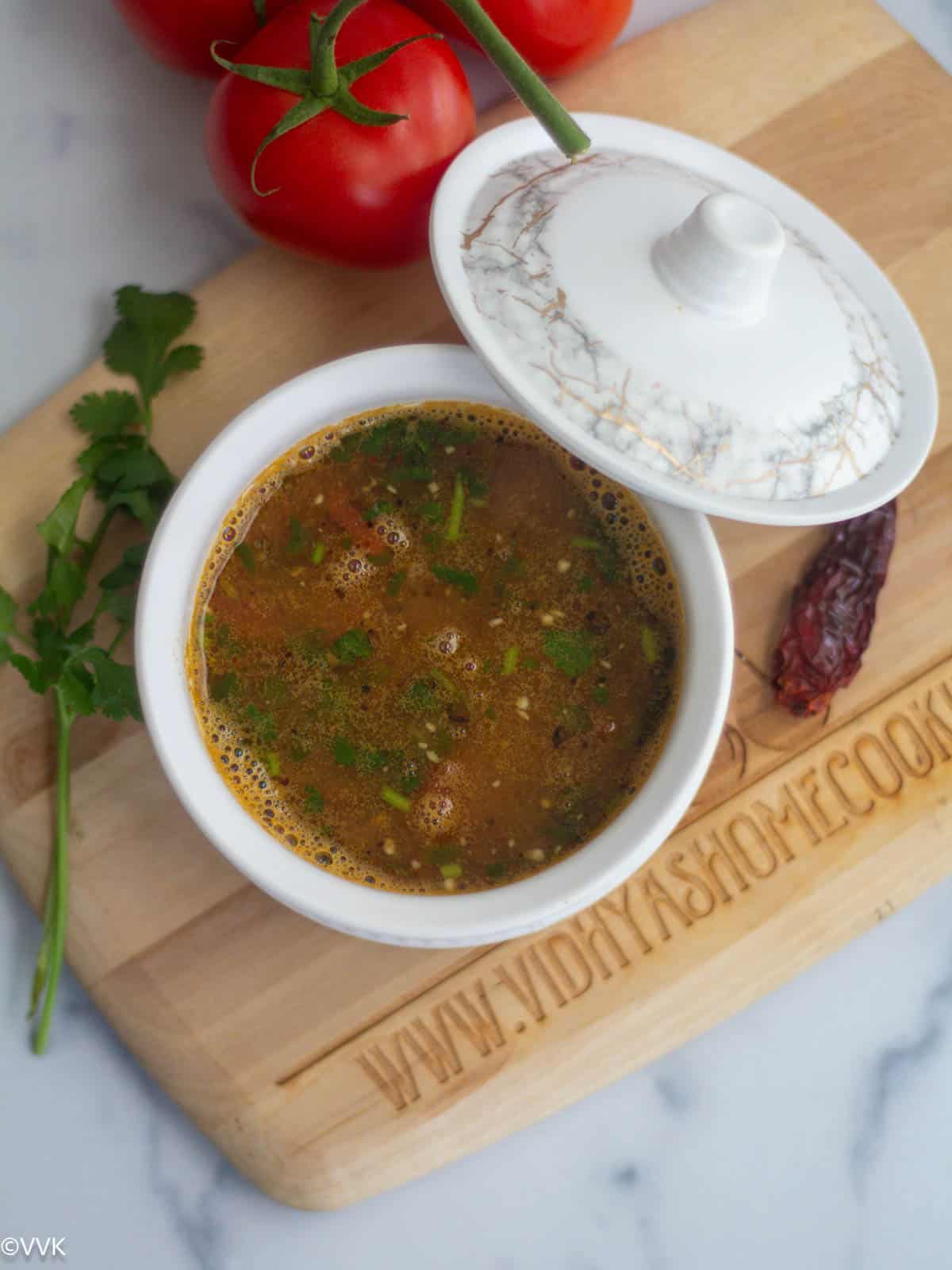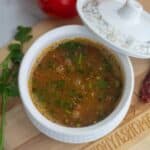Rasam is an integral part of South Indian cuisine; you can find different varieties across the South Indian states. It is a thin tamarind-based soup with or without lentils. In most Tamil houses, we use rasam powder/spice mix daily to make the rasam. But you can also make fresh rasam spice mix as required and make the rasam. For this Mysore rasam, I am using freshly made rasam spice mix.
Rasam varieties
If you are looking for rasam recipes that don’t call for rasam powder, try my Kerala-style or cumin-pepper rasam. If you want to up your rasam game, try my watermelon, pineapple, mint, or horsegram rasam. :-) If you don’t have tamarind, try my lemon rasam. Yes, I have quite a few Rasam recipes on my blog. You can check them all out in my rasam archives.
Mysore rasam or Arachuvitta rasam
Mysore / Mysuru is a city in Karnataka. I don’t know why this rasam got the name Mysore rasam; maybe it is quite popular around that region. I adapted the recipe from Meenakshi Ammal’s popular Tamil cookbook, Samaithu paar (cook and see). As we prepare the fresh spice mix, you can call this rasam arachuvitta rasam in Tamil. It’s very similar to kalayana rasam (the rasam that the caterers prepare at weddings). Some add coconut, and some skip it. Ok, let’s leave the name apart. This rasam is very flavorful, and I am sure you will go for a second and more servings. Now, without further ado, let’s check the ingredients and the procedure.
Ingredients required
Toor dal: This Mysore rasam is lentil-based. We need ¼ cup of toor dal, which we pressure cook with turmeric powder and mash well. For the rasam spice mix, We roast coconut, coriander seeds, chana dal, cumin seeds, peppercorns, and red chili and grind them to make the rasam mix. Tamarind paste: I used my homemade tamarind paste. You can also use store-bought tamarind flesh, soak it in water, and extract the juice. Curry leaves, cilantro, and tomato: Without these three ingredients, rasam is incomplete. If you don’t have curry leaves, please ignore them and don’t look out for substitutes. To Temper: We need ghee or oil, mustard seeds, cumin seeds, and asafoetida. Apart from these ingredients, we need salt and water. Please check the recipe card for the exact measurements.
How to serve this rasam
In our household, we typically enjoy rasam with hot rice and any dry curry, aka poriyal, or with gravy kootu. You can also enjoy rasam with millet or quinoa. Plain and warm rasam is very soothing and comforting. Enjoy it as a soup with a side of papad.
Make it a Tamil Nadu feast with these recipes!
A Tamil Nadu thali is complete without rasam. How about making some sambar, kootu, poriyal, and kheer along with this rasam to make a full feast? Check out these recipes below, and these are my favorite combinations. And this is a no-onion, no-garlic menu, perfect for festive days!
How to make Mysore rasam
Pressure cook the dal.
Rinse the toor dal and pressure cook it in your preferred method. I used my stove-top pressure cooker. Add 1 cup of water and the turmeric powder to the rinsed dal. Pressure cook for 3 to 4 whistles and let the pressure release naturally.
Let it cool and mash it well. If using an electric pressure cooker, use the pot-in-pot method for 30 to 35 minutes, let the pressure release naturally, and mash it well.
Prepare the rasam spice.
While the dal is cooking, you can roast the ingredients. In a small pressure pan or kadai, add coriander seeds, chana dal, cumin seeds, peppercorns, and red chili. Roast them until fragrant. Finally, add coconut, roast for a minute, and turn off the heat. Let the coconut rest in the residual heat.
Let this mix cool and grind it with ¼ to ⅓ cup of water in a semi-smooth paste.
Prepare the rasam
Add the tamarind paste/extract, chopped tomatoes, salt, curry leaves, and one cup of water to the saucepan. Mix well.
Simmer this mix over medium flame for 5 minutes.
Now add the ground paste, rinse the mixer jar with ½ cup of water, and add that. Mix and simmer again for five mts. When it comes to gentle boil, add 1 tbsp of cilantro and let it simmer for a minute.
Add the cooked dal and remaining water to this stage and mix well.
Add the jaggery, reduce the heat to medium-low, and gently simmer the rasam. Do not let the rasam to boil. Once it becomes frothy, turn off the heat.
Temper the rasam:
In a separate kadai, heat oil or ghee. When it is hot, add the mustard seeds, cumin seeds, and asafoetida. When the mustard seeds splutter, add the tempering to the rasam.
Add the remaining cilantro and cover the rasam with a lid. The flavors steep in. Enjoy it warm with rice and curries of your choice.
Recipe Notes
Make sure you cook the dal nicely. It should be mushy so that it blends well with rasam. You can also use frozen toor dal for this rasam. I add cilantro at two stages for more flavor. You can use cilantro stems, too. Tempering in ghee adds more flavor, but if you follow a vegan diet, use the unflavored oil. Also, skip asafoetida for a gluten-free version. A small amount of jaggery adds a balance to the flavors. Adjust the peppercorns, red chili, and salt to taste.
📖 Recipe
Update Notes: Earlier posted on 2015, now updated with new pictures, recipe card with nutrition information.
